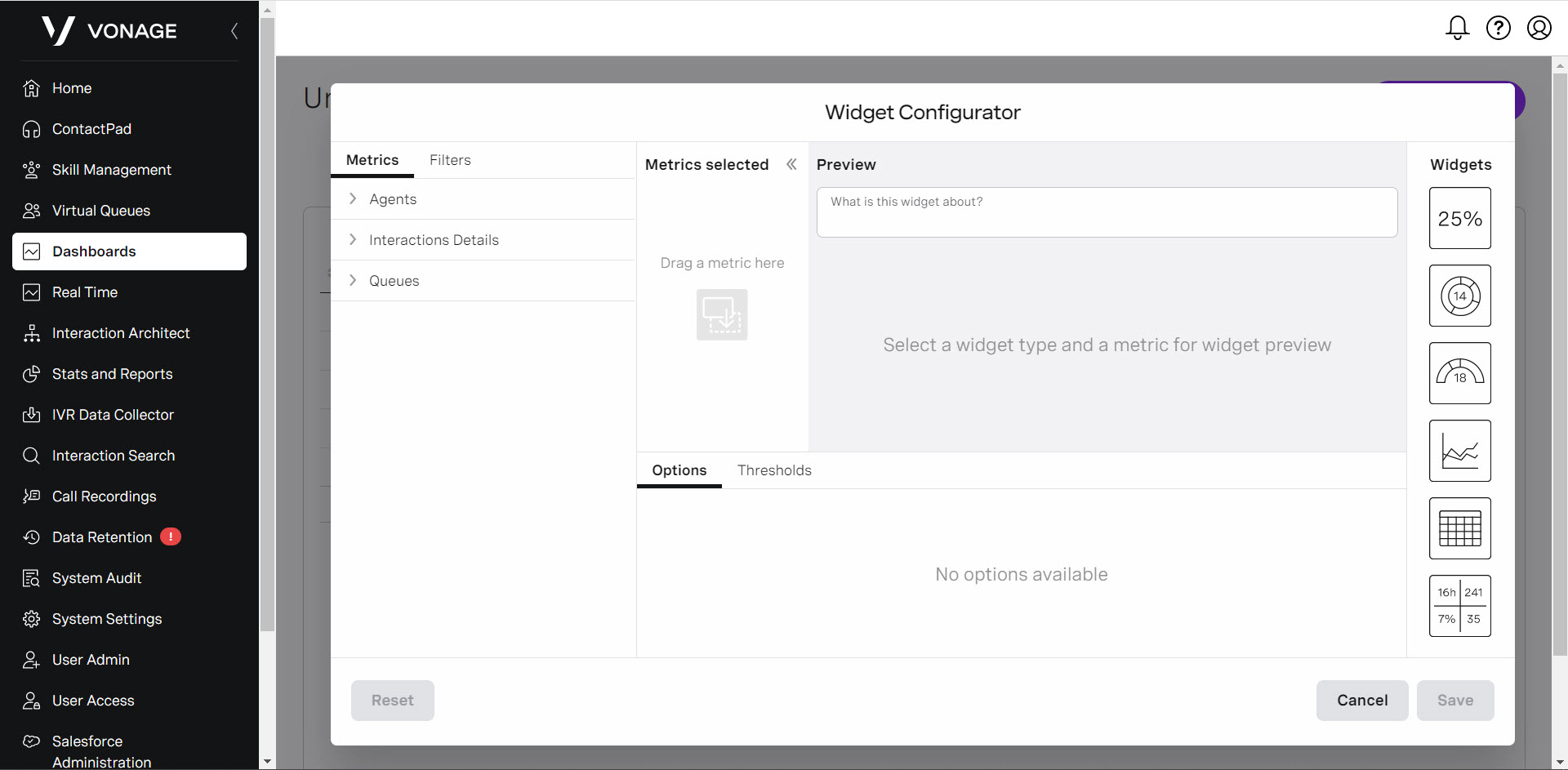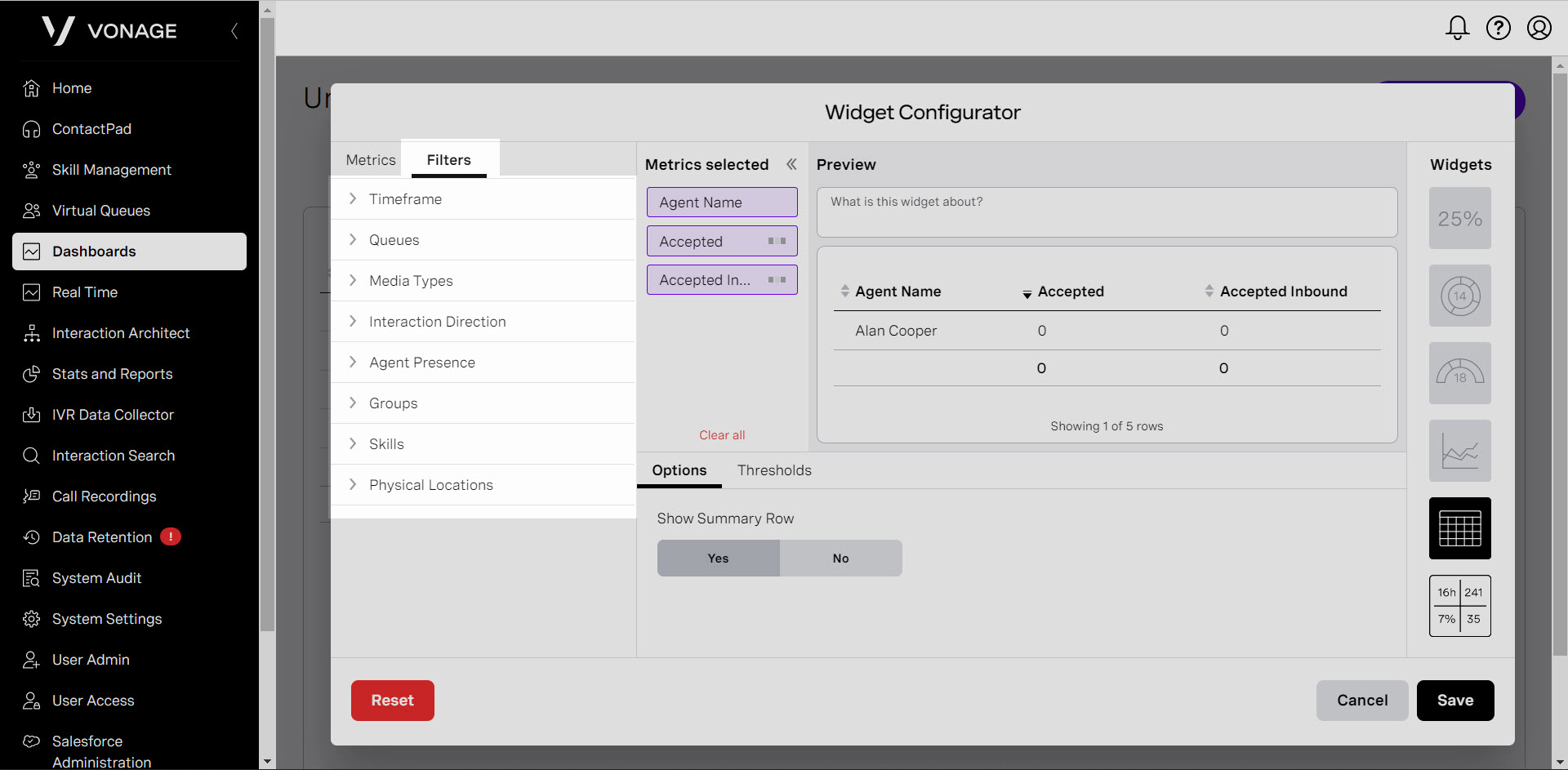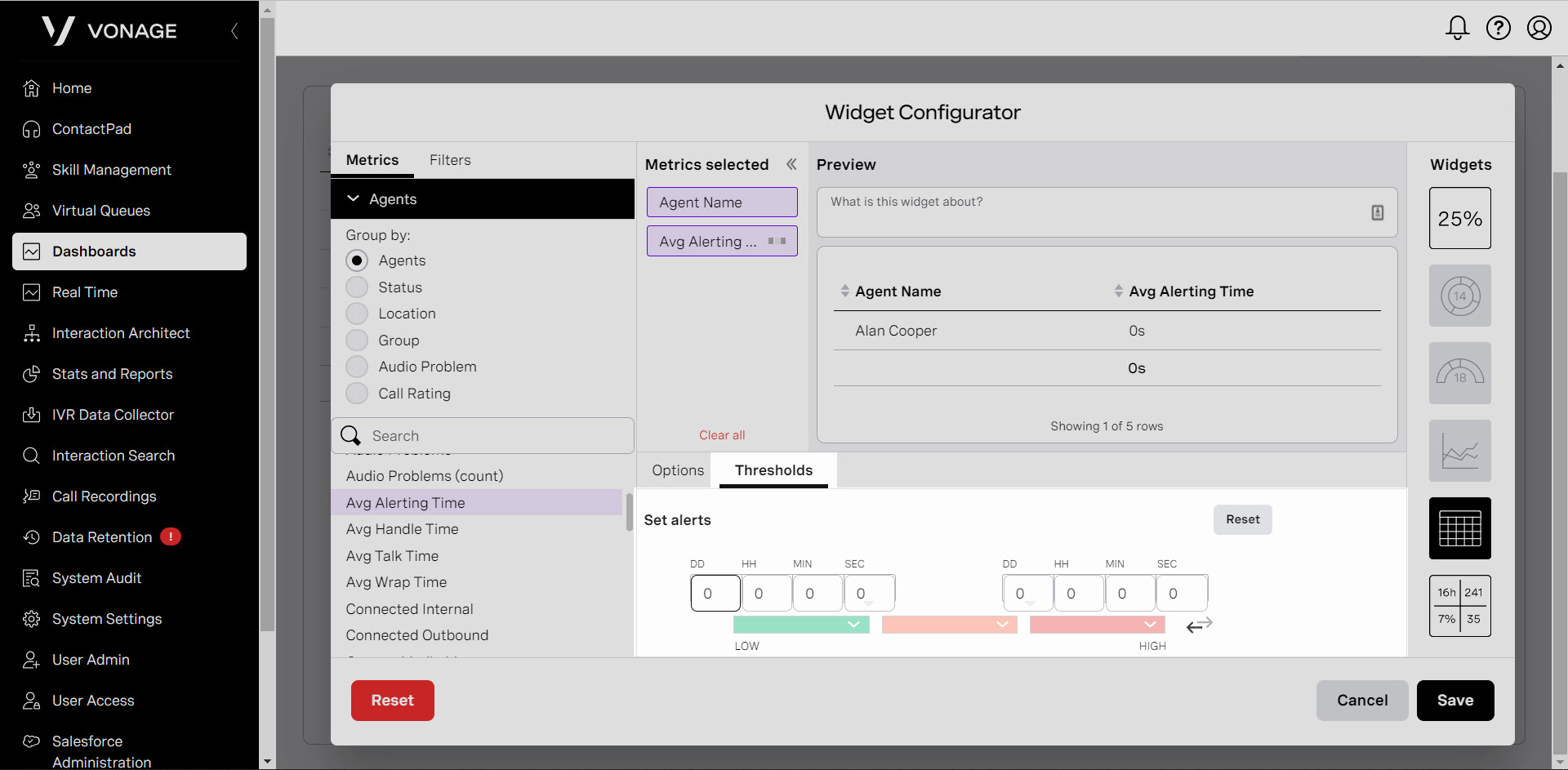Analytics (for Supervisors)
Dashboards
The VCC Admin Portal Dashboards area includes interactive widgets that provide visibility into a Vonage Contact Center account’s activities. These interactive widgets are generated with data that can help you improve your customer service and sales experience.
As mentioned above, the dashboard contains widgets, these are current snapshots of configured data about agents, interactions, and queues. A widget can contain one type of data at any time.
- Agent: These focused widgets can display interactions agents have handled, the time agents spent in each presence state, or handling those interactions or a combination of these.
- Interaction Details: These focused digits are from the customer point of view, including information about the customer telephone number, the number that called to reach VCC, and the time it took an agent to answer.
- Queues: These focused widgets contain queue related data based on interactions within this queue.
To create a new Dashboard, from the Dashboards page, click Create New. A new dashboard appears. To configure the settings, click Settings icon. The Configure Dashboard dialog box appears. Enter a name and time zone in the appropriate fields.
Set the Start of Day. This determines the time in which the data in the dashboard is displayed. For example, if you set the start day to 8 am, the dashboard will show data from 8 am up to 24 hours or 7:59 am the next day.
Select the access, whether it be private (only the builder is able to see the dashboard) or public (all supervisors and admins are able to see the dashboard). Finally, choose the placement. You can either choose auto, which will place the widgets in a grid format, or manually, allowing you to place them where you would like. Click Save.
To delete a dashboard, click on the menu icon. Click Delete when the menu appears. You are prompted to confirm that you want to delete the dashboard. Click Delete.
Adding a Widget
To add a widget to a Dashboard, select the Dashboard you wish to edit. Then click on Create New. The Widget Configurator box appears.
Start by selecting the metrics you wish to use for this widget. Select the type of data and metrics you want to view in your new widget. For this example, let’s focus on Agent.
Once expanded, the Group By option is selected to Agent, proceed to select the metrics you wish to monitor from the list. Once selected, they will be displayed in the Metrics Selected location. Here you can move these metrics in the order you wish to see them within the widget. You will see a preview of the widget to the right of this area.
To remove a metric, hover over it and click the X. The metric will be deleted.
When you’ve picked all the metrics that you want to appear in your widget, click the Filters tab. You will have different filters available, depending on the metrics you have implemented. Configure your filtering option from the items below if applicable to your selected metrics:
- Timeframe – Select the timeframe for the data to display. For example, if you select 30 minutes, the data shown will be from the previous 30 minutes.
- Queues – Select the queue or queues you want to display data for. For example, you may want to display metrics from the Sales queue team only.
- Media Types – Select the media type or media types you want to display data for, these include calls, emails, or chats.
- Interaction Direction – Select the direction of interaction you want to display data for. Please note/ by default all directions, inbound, outbound, and internal are selected.
- Interaction States – Select the interaction state you want to display data for. For example, if you only wanted to see ongoing interactions, make sure this is the only filter selected.
- Agent Presence – Select the agent presences that you want to display data for.
- Groups – Select the group or groups you want to display data for.
- Skills – Select the skill or skills you want to display data for.
- Physical Locations – Select the location or locations of the agents you want to display data for.
Defining Thresholds
You may be able to customize threshold values depending on the metrics you pick. If you choose several metrics for which a threshold can be defined, a list of available metrics will appear. Click on the metric for which you want to set a threshold.
For time metrics, you must specify time thresholds; for number metrics, you must specify number thresholds; for percentage or fraction metrics, you must specify percentage thresholds.
The value in the field or fields on the left must be lower than the value in the field or fields on the right. Use the arrows on the right to switch the colors if you want the highest level of alert for a low or high value accordingly. When you define a threshold for a metric, an indicator appears on the selected metric in the Metrics selected area.
Adding and Editing Your Widget
Once you have determined the metric and filters for your widget, proceed to provide a name for your widget in the What is this widget about? field. When you are satisfied with your settings, click Save.
Your widget will appear within your dashboard. Click Save dashboard.
To edit an existing widget, locate it within the dashboard and click the More icon and select Configure.
The configuration window appears to make your changes. When complete, click Save. Your changes will now be made and displayed within the dashboard. Click Save dashboard.













